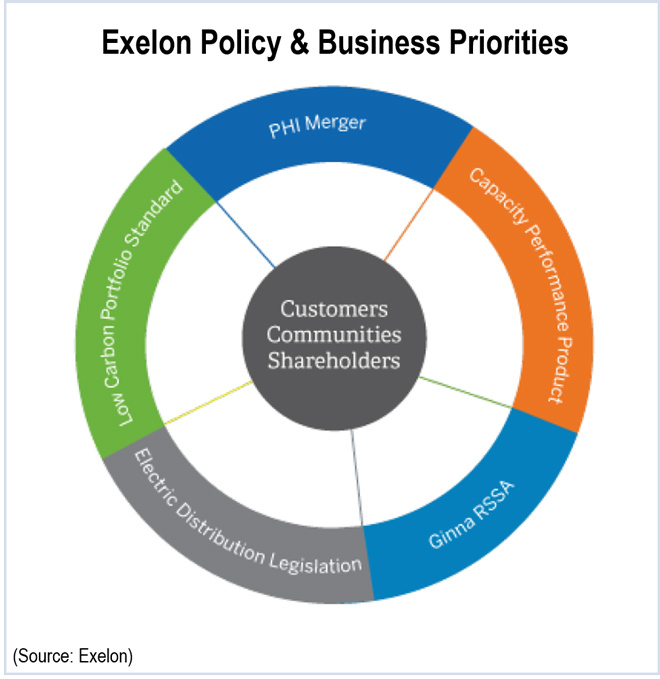The SPP Regional Entity, which is seeking a renewal of its delegation agreement with the North American Electric Reliability Corp., is trying to assuage NERC’s concerns over the RE’s independence.
“As far as I know, it’s the negotiating team at NERC that has communicated” NERC’s concerns, RE Trustees Chairman John Meyer told the SPP’s Board of Directors/Members Committee meeting Tuesday.
SPP’s current five-year delegation agreement expires Dec. 31. It calls for renewal if SPP passes a NERC audit to ensure that SPP “continues to meet all statutory and regulatory requirements necessary to maintain its eligibility for delegation.” Either party may terminate the agreement by giving written notice at least one year before the end of the term.
Ron Ciesiel, general manager of the RE staff, said SPP officials were given a revised pro-forma delegation agreement about two weeks ago that removed the automatic renewal provision. He said RE officials plan to discuss it with NERC at an upcoming meeting.
SPP is the only RTO or ISO that also enforces reliability rules as a NERC regional entity. The Federal Energy Regulatory Commission raised its own questions about the RE’s independence in a 2008 audit. (The Texas Regional Entity was formerly a division of ERCOT, but it became an independent corporation in 2010.)
The audit concluded that SPP RTO management had supervisory control over SPP RE employees and that RTO employees had influence over NERC compliance monitoring and enforcement policies. The commission required SPP to hire a full-time RE manager and to eliminate all reporting relationships between RE employees and RTO employees. (Full disclosure: RTO Insider Editor Rich Heidorn Jr. was a member of the FERC team that conducted the audit.)
NERC did not respond to requests for comment.
Finance Committee Considering Changes to Administrative Fee

The SPP Finance Committee is considering a change in the way it sets the RTO’s administrative fee rate.
Since FERC’s approval of SPP as an RTO in 2004, it has set the rate at a level designed to recover its annual budget plus or minus amounts necessary to true-up prior periods.
The fee has grown steadily along with the RTO’s increased level of services.
Because SPP projects operating budget expense levels to be more level and predictable than in prior years, the Finance Committee is considering two alternatives: continue the status quo floating rate, or a stable rate approach that would enable funding for contingency, reserves and capital expenditures in the annual budget.
The status quo will generally result in a lower rate in the near term and is consistent with SPP’s existing policy to maintain “generational equity.”
The stable rate proposal would improve the predictability of rates from year to year but will result in SPP’s recoveries being either higher or lower than expenses.
SPP expects a stable rate approach would result in a higher rate initially than the status quo because of a modest reduction expected in the status quo rate following the addition of the Integrated System load in October 2015. Under an example provided by the committee, the stable rate could rise from $0.38/MWh in 2015 to $0.39/MWh for 2016-2020, while the floating rate could fluctuate between $0.37/MWh and $0.38/MWh (see chart). The floating rate could result in operating cash shortfalls of as much as $79 million in 2020, versus $39 million under the stable rate.
Capital expenditures were projected to drop from $29 million in 2015, to $19 million next year and $15 million annually for 2017-2020, under the example.
The analysis did not include any financing to cover capital expenses or cash shortfalls.
Finance Chairman Harry Skilton said a level administrative fee would mean SPP keeps more cash on hand. “The question is what do we do with it?” he asked in inviting stakeholder feedback on the options. “Do members want SPP to borrow rather than them borrowing? We do have a fantastic credit rating.”
Skilton also said SPP may have to increase its pension contributions by $1 million beginning in 2016 due to the adoption of the 2014 mortality tables published by the Society of Actuaries, which predicts longer lifespans for retirees.
New Members Welcomed in Iowa, Minn., SD
Members approved three cooperatives for membership: Corn Belt Power, which provides power to nine distribution cooperatives and one municipal electric cooperative in 41 counties in northern Iowa; East River Electric, which serves rural areas of 41 counties in eastern South Dakota and 22 counties in western Minnesota; and Northwest Iowa Power, which provides power to seven distribution cooperatives in western Iowa.
MMU Hires Law Firm for Independent Representation
SPP has hired a D.C. law firm, Michael Best, to represent the Market Monitoring Unit, said Josh Martin, chairman of the Oversight Committee.
To ensure its independence, the MMU must have a different law firm than what the RTO uses, Martin said.
“There should be no question about the independence of the MMU,” Martin said. “If they need to make filings to FERC, they have the appropriate resources to do so.”
Markets and Operations Policy Committee Recommendations Approved
The board accepted the following Markets and Operations Policy Committee recommendations:
- Approve new rules on how mitigated offers will be calculated for generators that fail market power tests, a solution that includes default values for variable operation and maintenance costs (Revision Request 69). (See SPP MOPC OKs New Rules for Calculating Mitigated Offers.)
- Approve the selection of three futures scenarios for the 2017 Integrated Transmission Planning 10-Year Assessment to measure the impact of the Environmental Protection Agency’s proposed carbon emission rule. (See ITP10 to Include 3 Scenarios for Clean Power Plan.)
- Reject a request from Western Farmers Electric Cooperative for a waiver from a rule barring base plan transmission funding for generation projects that push wind’s share of capacity above 20% of summer peak load. The Regional State Committee also voted to reject the waiver but agreed with other stakeholders that the 20% threshold should be reconsidered. (See Wind Waiver Rejected; SPP Members will Revisit Assumptions.)
Board Expands; Eckelberger, Skilton Re-elected
In a special Members Committee meeting, stakeholders voted to add up to three external seats to the Board of Directors, which currently includes six external directors plus SPP President Nick Brown. SPP spokesman Tom Kleckner said the change gives the board “flexibility … to add someone if the appropriate candidate comes along.”
The Corporate Governance Committee also nominated Board Chairman Jim Eckelberger and Vice Chairman Harry Skilton to new three-year terms. The election will be in October.
The Members Committee also added six member representatives as it expands to 20 from 15 and fills one vacancy: David Hudson, Xcel Energy (representing investor-owned utilities); Mike Risan, Basin Electric Power Cooperative (cooperatives); Stuart Lowry, Sunflower Electric Power Corp. (cooperatives); and Kristine Schmidt, ITC Great Plains (independent transmission companies), were elected to two-year terms, while Kelly Walters, Empire District Electric Co. (IOU), and Bob Harris, Western Area Power Administration – Upper Great Plains Region (federal power marketing agency), were elected to eight-month terms.
— Rich Heidorn Jr.












